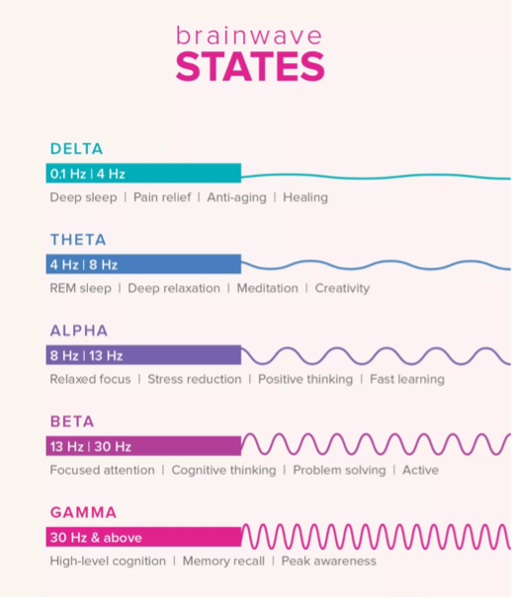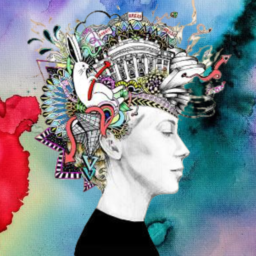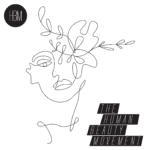
Picture this. You’re invited to a dinner party. You pick out a nice dress to wear. You head to the grocery store and grab a fancy bottle of wine. You drive to the home and park out front. You walk to the front door, are greeted by the host and invited inside. What do you imagine the home is like when you walk through? What colors do you see? What smells do you smell? What sounds do you hear? What’s the lighting like? What’s the energy like? How do you feel? Perhaps you immediately envisioned the last dinner party you went to over a friend’s house and have that in mind. Perhaps you visualized a space that you saw on TV or in a movie. Or perhaps you came up with a whole new ideal space, a mash of homes you may have seen assembled all into one neat mental experience. If this was your dinner party, how would you want your guests to feel when they walked in the door? How would you want to feel?
Let’s try another one. Picture your ideal bedroom. What are the colors of the walls? The style of the furniture? The pictures and accoutrements that decorate the room? What does it smell like? How does it make you feel? I’m curious, is your ideal bedroom your actual bedroom, or did you visualize something completely different? If so, how are they different? Chances are that the space of this visualized bedroom look quite a bit different than the space you visualized in the dinner party scene. How are they different?
The images that are brought forth to you are examples of mind compartmentalization. They represent the ideal appropriateness of the feelings you wish to have during any particular experience. You’ll notice that one feeling is no better than the other. One room is not “righter” than the other. They are exactly perfect, because they are yours, and they make you feel content for the occasion. Now imagine someone else were to step into your visualization and start critiquing it. “Oh, that color is way too drab. That furniture is so tacky. That music is really annoying…” Well isn’t that all just nonsense. You see, other people’s opinions are not invited into your visualization for a reason. They simply do not belong there, and they have no business commenting on your visualization. They can have their own visualization and be perfectly happy. Why they choose to interfere in yours is overstepping boundaries. And so, the lesson here is, we lock the dinner party and bedroom doors, and we don’t let them in. We let them clamor outside in the waiting room where they will not bother you. Your visualization is your sacred space, it’s not to be shared or defiled by anyone else’s presence. Congratulations! You just accepted the solemnity of your mind space. And now you have a bit of a better understanding of why it’s important to let your mind space be yours and no one else’s. Now, it may seem like uninvited guests who enter your visualization with compliments are welcome to stay. Oh, I just love that bedspread! You have the most amazing taste in patterns! That chandelier is the most gorgeous I’ve ever seen! Positive reaction always appears to be good to absorb into your mind space, but the watch-out comes when it feeds the ego. In no time at all, you find yourself motivated more by the hunger for positive reactions than by the pleasure of the exercise itself. That, my friend, is called selling out. Be aware of your tendency to be a people pleaser. First, please yourself, and feel appreciation for supporters, but don’t let the supporters influence your content. Do you. Be you. Love you.
What does all this have to do with cultivating your space? Well, this exercise is intended to move out of the mind space so you can contemplate your in-real-life (IRL) surroundings. Essentially, the intention is to become more mindful of the physical space in which you are dwelling. After all, your home and your surroundings are a representation of who you are inside. Now, you may say to me, “If I had my way, I’d live in a palace, not a disheveled apartment on the east side of town.” Well, that may be so, but I’m here to tell you that you have more control over your life than you think. This is where visualization becomes powerful. Because what you see in your mind, you can turn into reality though activation. The important thing is to not for a moment doubt yourself. Believe in your heart that exciting things will come your way.
Color Vibes
When I was young, I taught myself how to draw. My mom got me a subscription to Tiger Beat and Teen Beat magazines filled with pictures of all my favorite pop crushes like Duran Duran, A-ha and Michael Jackson. I remember grabbing a pencil and some blank paper and teaching myself how to draw portraits. After that, I started taking art classes in school. Eventually, I would enroll in college as an art major, which I subsequently converted into a graphic design minor. In those early days back in school, I learned about color and light theory – contrasting colors, complimentary colors, color mixing and positive vs. negative space relations. For example, the color wheel has all the colors of the rainbow on it – red, orange, yellow, green, blue, indigo and violet. When arranged in a circle, the colors opposite each other are contrasting colors. Red and green contrast as do orange and blue. Complimentary colors sit next to each other, like red with orange and indigo with violet. Warm colors extend from red to orange to yellow whereby cool colors extend from green to blue to indigo. Violet is a balanced blend of warm and cool.
Growing up, the walls in my childhood bedroom were painted pale yellow. I didn’t know it at the time, but the colors of the rooms where I spent a majority of my time seemed to “color” my upbringing. Colors vibrate at different frequencies, so when they hit our eyes, we absorb those frequencies and either resonate with them or against them, depending on our own personal vibrations. There were times as a child when I would sit in my bedroom and feel extremely bad about myself without knowing why. If I was asked what was wrong, I was never able to articulate my feelings. It was really frustrating. I would later learn about the impact color has on our emotions. It’s no surprise that wearing certain colors helps us feel bright, moody, mysterious, sophisticated, and so on. It turns out that the color yellow is associated with feelings of confidence and power. Golden yellow, like the color of the sun, represents strong confidence, control, and self-esteem whereas pale yellow, like the color of my childhood walls, represents timidness, powerlessness, and low self-esteem. I suppose it could be postulated that the color of my walls may have enhanced my own internal feelings of low self-esteem. I suppose it also could be postulated as complete and utter nonsense. But think about this…do you have a favorite color? Do you know why that color is your favorite? Sometimes it is hard to articulate, because the way our brains interpret colors is not through language, it’s through emotions and feeling. To elaborate on our previous discussion, language pales as a method for depicting feelings. It will always be inadequate, because there are only finite words in our vocabulary. Expression through visualization, color, and light, on the other hand, is infinite. A picture is worth a thousand words. Perhaps this statement should be rephrased as a picture is worth infinite words.
Think about the colors you wear, the colors around your home, and the colors in your workplace. How do these colors make you feel? Do they make you feel good inside and support feelings of positivity, or do they make you feel drab? Are the colors you choose to surround yourself with there to make you happy, or are they there to try and impress others? You may find that some simple changes in the colors of your wardrobe or your surroundings help to subconsciously lift up your mood. Try it if you can. Even printing out a simple picture of artwork or nature and hanging it by your desk could make a small but positive difference.
Sound Vibes
Have you ever wondered why most Western hemisphere pop songs are composed using only four chords? It has become somewhat formulaic in the major music industry. I didn’t understand the science behind the power of the four-chord song until I visited a sound therapist recently. I learned that every person carries their own base frequency. The natural pitch of your speaking voice is an indicator of that frequency. When we gravitate to songs, the resonance lies in how the music not only hits our ears but also our emotions. The music, through a multi-vibrational arrangement of lyrics, notes and tones, are like super-charged therapy sessions, spellbinding our brainwaves with their hypnotic effect. Four-chord songs, in particular, have a way of being simple enough in their repetition to be memorable and “catchy” among a wide portion of the population. We find ourselves singing along and humming the tunes with very little effort needed.
I also learned that our taste in music has very much to do with our baseline frequency and the tones that either compliment or alter that frequency. And conversely, our distaste for certain songs or music are either due to inherent friction or fatigue (oversaturation) with our baseline frequency. Sometimes we hear music playing innocuously in the background that sinks into our subconsciousness. It’s vibing with or against our own biorhythms and impacting our moods, yet we’re not even aware of it. We may hear a song or set of songs over and over again, and without realizing it, we’re in a bored, uncreative, irritable state. Like sneaky little brainwave ninjas, the tones of the music we are receiving cause us fatigue and stress our well-being. That’s why it’s important to stop and pay attention to the types of sounds that surround you. Determine the kinds of music and sounds that are healing versus harmful to you. Protect yourself from the eardrum pollution you may be exposing yourself to every day.
I started listening to binaural beats on headphones every day. If you’re not familiar with binaural beats, they are the combination of two slightly different frequencies to create the perception of a single new frequency tone in the brain. For example, if a 132-hertz tone goes into your left ear and a 121-hertz tone goes into your right ear, then your brain will process and absorb an inaudible 11-hertz tone in addition to the two other tones. The two tones must have frequencies less than 1000 Hz in order to work, and the difference between the two tones can’t be more than 30 Hz. The tones also must be received one per ear – listening out in the open without headphones won’t work. Binaural beats are considered auditory illusions. The thinking is that listening to them helps “tone” your brainwave patterns into desired states. In case you were wondering, our daily activities are associated with five different brainwave states:
- Delta: 0.5–4 Hz. Slowest wave pattern. Associated with deep, dreamless sleep and restoration/rejuvenation.
- Theta: 4–7 Hz. Associated with deep relaxation, the rapid eye movement (REM) sleep phase, meditation and creativity.
- Alpha: 7–13 Hz. Associated with wakeful relaxation, calm awareness, increased positivity and decreased anxiety.
- Beta: 13–30 Hz. Associated with high awareness, activity, concentration and problem-solving.
- Gamma: 30–50 Hz. Fastest wave pattern. Associated with peak alertness, high physical performance, high processing speed, memory recall. Also associated with anxiety.
So it follows that if you can biohack your brain into aligning with a desired brainwave state, you may be able to induce the benefits of that particular brainwave state. For example, if you listen to delta binaural beats, you may be able to attain better sleep. If you listen to alpha binaural beats, you may be able to feel calmer and less stressed. If you listen to beta binaural beats, you may be able to be more productive at work. And so on. Due to the fact that authentic binaural beats compositions are absent lyrics, I hypothesize that they afford less subconscious distraction than, say, listening to pop music. This then allows for greater concentration and focus, which is a more mindful approach to having background music on. Feel free to try binaural beats for yourself. Don’t concern yourself too much about case studies and clinical trials and the like. The important thing is that if it helps you and you only, then that is all that matters. If it doesn’t, there is really no risk in you trying. I tend to have a mindset that little things can go a long way, especially when times are really tough. Any little act of kindness that you can show yourself when you’re down is a massive achievement on your wellness journey.
Occupy Well-Being
As you’ve probably guessed, I have become a believer that what we choose to surround ourselves with – the colors, the objects, the sights, sounds and smells – are very much an outward manifestation of the energy inside of us. And conversely, the surroundings that we do not choose but are forced into have a profound impact on our personal energy. Try this right now. Do a walk-through of your home inside and out with fresh eyes. How does it make you feel? What do you like about it? What do you dislike about it? What gets on your nerves? If money was no object, what would you change? Do you like your neighborhood? Do you have a list of home-improvement projects that you haven’t had a chance to get to? Are there any of them that you can strike off your list this week? Wellness is a key factor to living out your happiness. As such, I believe there are wellness-driven, happiness-promoting aspects to consider regarding the openness, flow and materials you’re surround by. Without resorting to buying a new home, remodeling your existing home, or creating any uproar with others that live with you, here are some simple, practical, inexpensive suggestions to enhance your home for wellness and happiness:
- Overall – Fresh paint. Trimmed hedges. Swept cobwebs. Termites gone. Replaced bulbs. Some people are blessed with gardeners, housekeepers and maintenance workers to help with home upkeep. The vast majority of us do it ourselves. With all that’s going on in our lives, it’s easy to put off taking care of those little things around the house. But over time, those little things can add up and either create subconscious annoyances or bigger problems at the most inopportune times. Once a month, it’s a good idea to do a home scan to see if anything can be addressed in short order.
- De-Clutter – Remove from your home everything that you no longer use or no longer need. That includes items of high value (jewelry, purses, clothing, shoes) that are just sitting in your home serving no purpose other than to collect dust and take up space. Resell them or gift as much as you can. Learning to live with less is a major key to happiness according to Stoic practitioners.
- Purify – Keeping your house germ-free is an obvious aspect to wellness, however many of us don’t realize that we are living with black mold, allergens, mites or unhealthy CO2 levels. Just like regular doctor visits, your home should get regular checkups for preventative maintenance. Consider a HEPA air filter especially if you’re a pet owner. Sweep, mop and vacuum often, especially if shoes are worn inside the home. Clean your upholstery. Essential oils such as tea tree, rosemary, oregano, eucalyptus and peppermint can help enhance a feeling of purification, so long as allergic interference is not an issue. Do your best to not allow smoke in the home. If anyone in the home has asthma or other respiratory issues then sage, incense, palo santo or candle burning are not recommended.
- Mirrors – If your home is made up of smaller rooms or compact living spaces, you can instantly give the illusion of openness and spaciousness with large mirrors. Floor-to-ceiling mirrors or large, well-anchored mirrors placed over a couch help bounce light and add dimension. I add drapes to the sides of large floor-to-ceiling mirrors for softness and to give the illusion that the mirror is an entryway to another room.
- Window Coverings
- Sheers – Filtered natural light is soothing and calming to the senses. Consider sheer fabric drapes or paper blinds to cover windows in bathrooms or office spaces where direct sunlight may ordinarily blast in.
- Blackout Shades – Optimize your chance of a good night’s sleep by keeping your bedroom in total darkness overnight. Blackout shades can also help reduce extraneous outdoor noise that could otherwise subconsciously disturb your restful sleep.
- Mattress & Bedding – Honor your sleep with a fresh mattress free of creaks noises and poking wires. Choose a mattress and pillows best-suited to support your body, neck and head. If you can’t afford a good mattress, eggcrate foam is helpful for relieving body pressure and avoiding bedsores. Sleep in bedding that keeps your body cool and wicks away perspiration. Wash your bedsheets at least once a week if you can.
- Lighting – Notice how the current lighting in the rooms of your home makes you feel. Moderate harsh lighting with dimmer switches, thicker lamp shades, and lower wattage bulbs. Illuminate dark spaces and dark rooms to avoid eye strain. Fairy lights and well-lit paths in outdoor spaces add happy sparkle.
- Nature – Living plants absorb CO2 and release oxygen, so they are especially good to have in bedrooms or windowless rooms. I like to opt for the inexpensive, low-maintenance kind that I can’t easily kill like peace lilies, orchids and succulents. Fresh cut flowers bring joy unless allergies are a concern. Real-looking silk or paper flowers are a decent substitute for added grace. The sound of a trickling water fountain is soothing during the day.
- Furniture – Your furniture may be functional and attractive, but if you’re spending considerable time in any particular room(s) of your home, assess if the furniture there is helping or hurting your posture, particularly your family room couches and desk chairs. If replacing these pieces isn’t a viable option at this time, try adding cushions or pillows or footrests or even stack books as footrests to help with ergonomics.
- Artwork – Look around at the artwork hanging in your home. Would every single piece pass the spark-joy test? If not, see the de-clutter section above. Another fun tip: Grab a large blank sheet of paper or blank canvas. Grab a pen, pencil, magic marker, or whatever implement you want. Now draw something. Sign the drawing, frame it, and hang it in a prominent place in your home. Congratulations! You are now an artist and have a new conversation piece to feel proud of. Fun bonus: do this with your family or housemates and make a gallery wall.
10 Mantras for Cultivating Your Space
Take a moment now to affirm your connection with your surroundings and your environment. Remind yourself that your world is your home, and your home is in your heart. Promise yourself that you will be a good steward for a cleaner planet. Breathe, and know you are emanating beauty to everything and everyone around you.
I am the creator of the world I live in.
I will bring peace to my environment.
I lovingly take care of my surroundings.
I bring happiness to my home.
I color the world that is around me.
I fill my world with beauty.
I am the caretaker of my planet.
I have love and respect for nature.
Everything in my life brings goodness.
I create a more beautiful world.


















